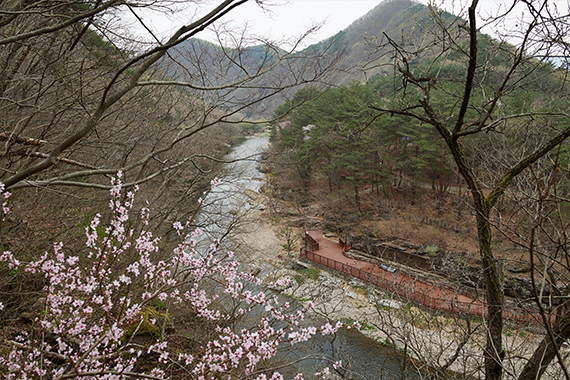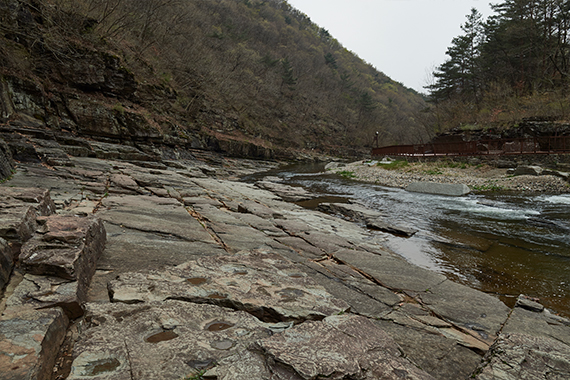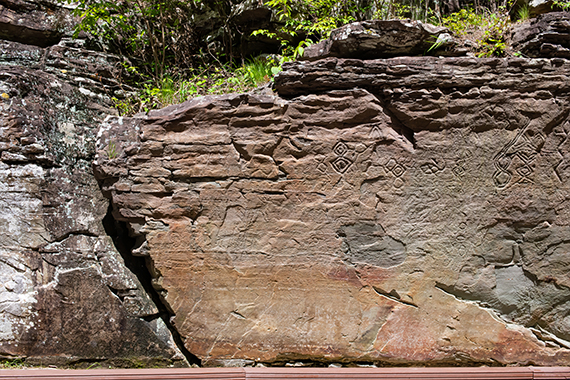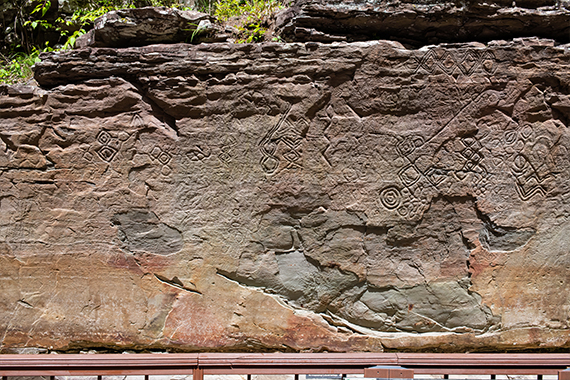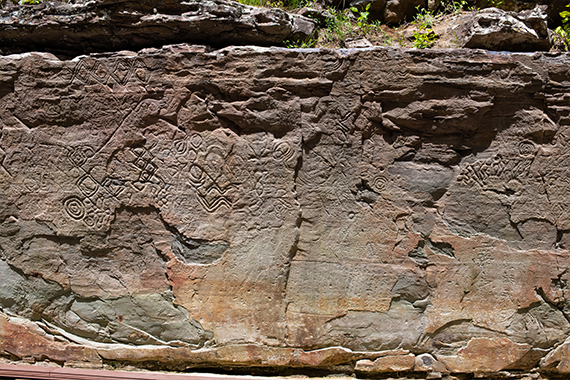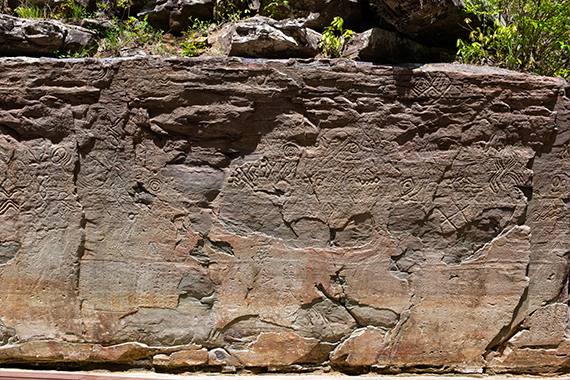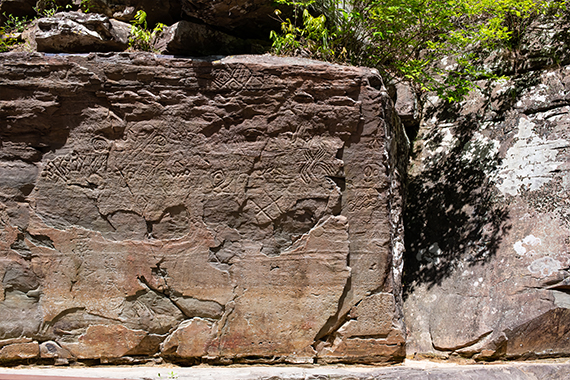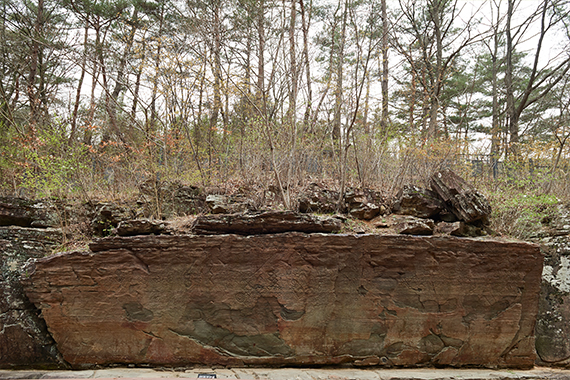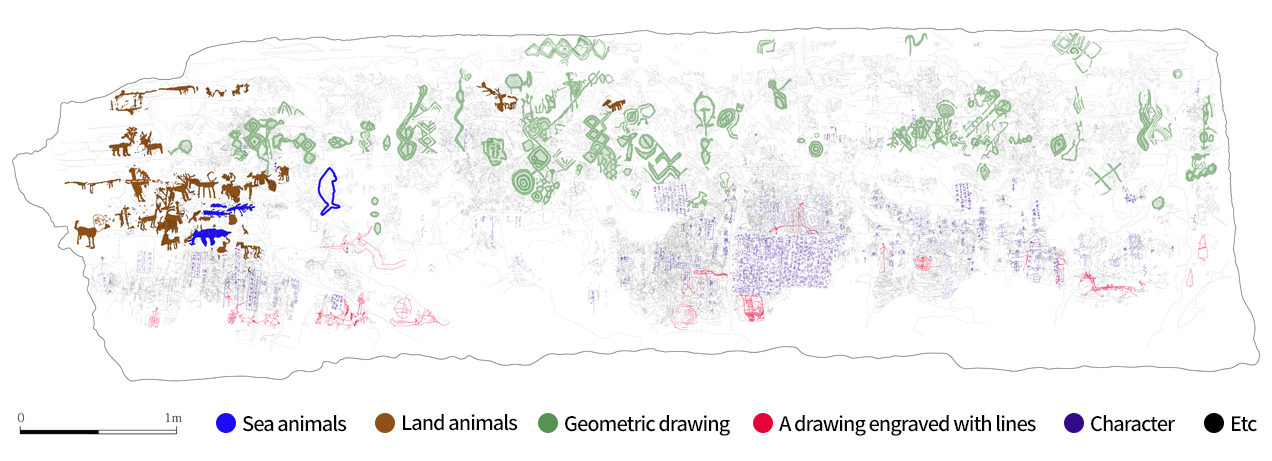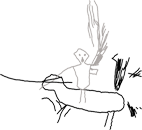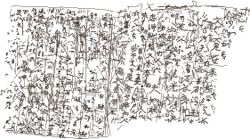Cheonjeon-ri Petroglyphs
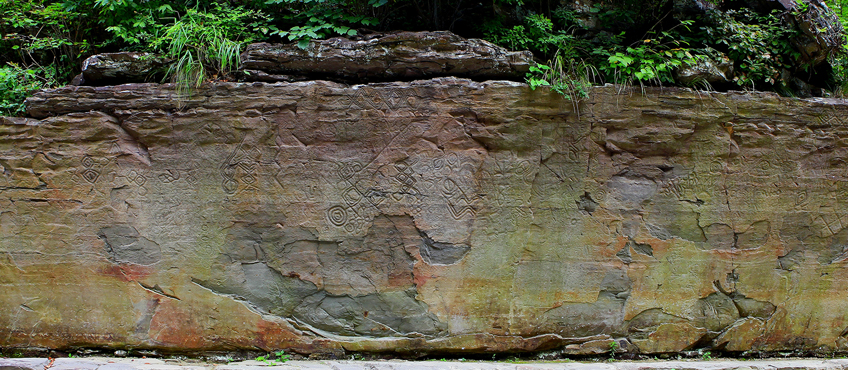
The petroglyphs at Cheonjeon-ri
National Treasure (Designated May 4, 1973)- Name : Petroglyphs of Cheonjeon-ri, Ulju
 San 210-2, Cheonjeon-ri, Dudong-myeon, Ulju-gun, Ulsan
San 210-2, Cheonjeon-ri, Dudong-myeon, Ulju-gun, Ulsan
Description
The Cheonjeon-ri petroglyphs are approximately 1.2km upstream of Bangudae Terrace, and about 2km from the Daegok-ri petroglyphs. Like the Bangudae Petroglyphs, they are drawn on vertical rock faces, with one central rock face around 2.7m high and 9.8m wide flanked by three smaller rock faces. The rock faces contain around 625 representations. The central rock face was formed inclined slightly forward (approx. 25°), and this provides shelter for the petroglyphs from rain and wind.
On the left portion are some simple neolithic representations, and at the top portion are geometric figures engraved using hard rock in the Bronze Age. At the bottom of the rock face are to be found pictures and letters engraved using metal tools during the Silla Dynasty. The fact that the petroglyphs were created over millennia with each new one carefully engraved around existing ones to avoid overlap or damage indicates that the representations commanded much respect, and that the area itself was considered a hallowed space.
127 characters were engraved into the rock face at Cheonjeon-ri using sharp metal tools during the Silla period. The characters Chinese (‘Hanja’) ideograms, and are found in a variety of combinations ranging from single-character form to longer passages with more than 10 lines. The characters primarily record who visited the site when, and why. One of the engraved passages is dated to the reign of King Beopheung of Silla, and is an important artifact in the study of ancient history.
Along with the petroglyphs at Daegok-ri, the Cheonjeon-ri petroglyphs are registered as a UNESCO World Heritage Site Tentative Lists.
On the left portion are some simple neolithic representations, and at the top portion are geometric figures engraved using hard rock in the Bronze Age. At the bottom of the rock face are to be found pictures and letters engraved using metal tools during the Silla Dynasty. The fact that the petroglyphs were created over millennia with each new one carefully engraved around existing ones to avoid overlap or damage indicates that the representations commanded much respect, and that the area itself was considered a hallowed space.
127 characters were engraved into the rock face at Cheonjeon-ri using sharp metal tools during the Silla period. The characters Chinese (‘Hanja’) ideograms, and are found in a variety of combinations ranging from single-character form to longer passages with more than 10 lines. The characters primarily record who visited the site when, and why. One of the engraved passages is dated to the reign of King Beopheung of Silla, and is an important artifact in the study of ancient history.
Along with the petroglyphs at Daegok-ri, the Cheonjeon-ri petroglyphs are registered as a UNESCO World Heritage Site Tentative Lists.
Discovery
The Cheonjeon-ri petroglyphs, discovered in 1970, are the first collection of prehistoric petroglyphs reported in Korea. A team from the Dongguk University Museum had been surveying the area for Buddhist sites over three years (1968 to 1970), and the petroglyphs were reported to them on December 24, 1970. The nearby Bangudae Petroglyphs were discovered on December 25, 1971, a year later.













